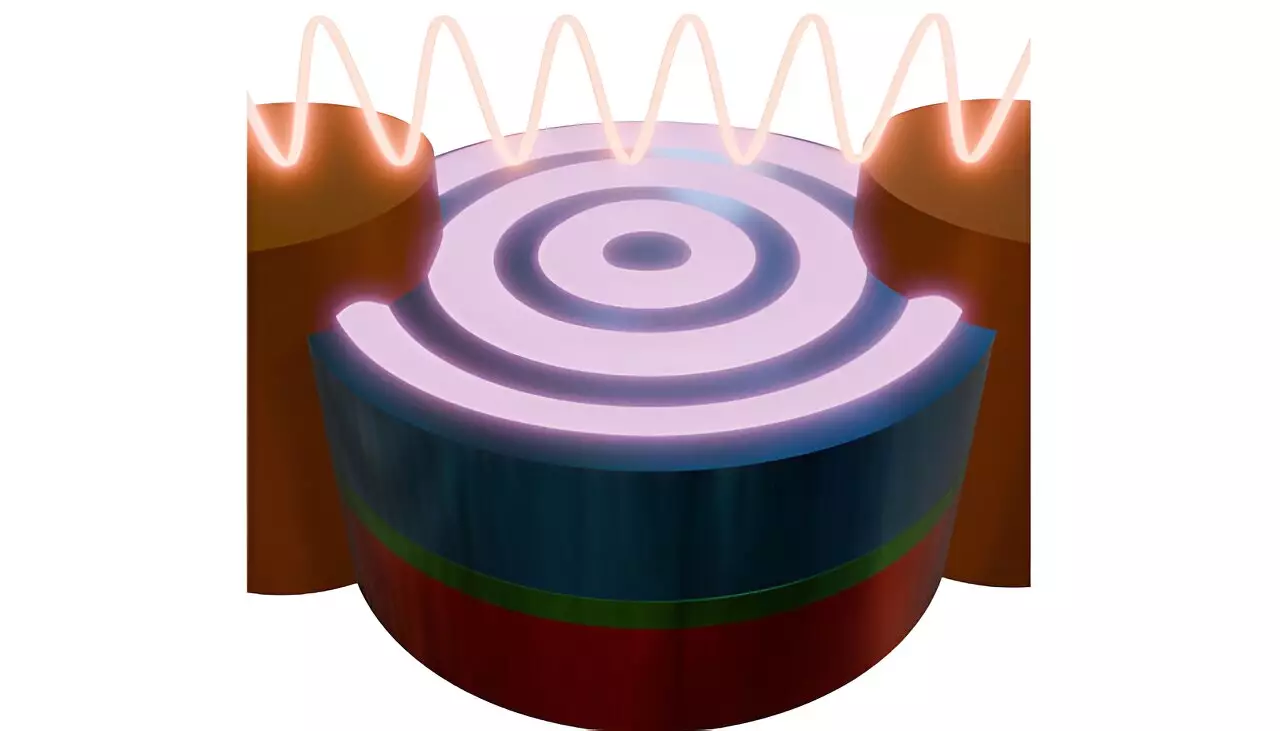In the realm of modern computing, researchers are continually confronted with the dual challenge of miniaturization and energy efficiency. A noteworthy study emerging from the collaborative efforts of the University of Vienna, the Max Planck Institute for Intelligent Systems, and the Helmholtz Centers in Berlin and Dresden addresses these pressing concerns by venturing into the innovative field of magnonics. Published in *Science Advances*, this research not only pushes the boundaries of computing technology but also opens up latent possibilities for reprogrammable circuits built upon the manipulation of spin waves.
As our computational needs grow exponentially, traditional CPUs—hardware staples in laptops, desktops, and smartphones—are becoming increasingly strained. These devices rely heavily on billions of transistors constructed through complementary metal oxide semiconductor (CMOS) technology. However, the downsizing of these transistors, while necessary, is being hindered by various physical constraints that threaten both performance efficiency and sustainability. With escalating power consumption and energy losses becoming all too familiar, it is imperative to explore alternative architectures that can offer sustainable solutions to the limitations of CMOS technology.
At the heart of the Austrian-German research team’s findings lies the concept of magnons—quasiparticles associated with the collective excitation of electron spins in a magnetic material. By figuratively comparing this phenomenon to a stone dropped into a serene lake, which creates rippling waves, researchers draw an analogy to the way spin waves propagate through magnetic materials. These waves have significant potential for transferring both energy and information with minimal losses, thus representing an attractive alternative to existing methods.
The study pinpoints that effective miniaturization of magnonic devices hinges on the production of short-wavelength spin waves; however, existing technologies for generating these waves often suffer from inefficiencies. Existing nano antennas, essential for creating these waves, require complex and costly manufacturing processes within pristine clean-room environments, limiting their accessibility and practical usage.
The researchers propose a groundbreaking method to circumvent these obstacles by employing a magnetic stack with intricate swirling patterns through which electric currents flow directly. According to Sabri Koraltan, the leading author, the innovation of utilizing lateral alternating current geometry in synthetic ferrimagnetic vortex pairs represents a significant leap in the efficiency of spin-wave generation. Results show that this method can yield spin-wave emissions with remarkable improvements over traditional techniques.
The design of synthetic ferrimagnetic structures is particularly intriguing, as they consist of layers with opposing magnetization patterns, allowing for the effective excitation of spin waves. This facilitates a new methodology for generating controllable spin waves, exhibiting a radical shift from conventional practices.
Through the use of high-resolution X-ray microscopy, the research team was able to observe predicted spin waves at the nanoscale, facilitating a deeper understanding of the phenomenon that had previously eluded them. Wintz highlights one of the study’s remarkable findings—that these spin waves can be dynamically redirected simply by modifying the current’s magnitude. This newfound flexibility is crucial for developing active magnonic devices, offering unprecedented adaptability that could vastly improve the efficiency and performance of computing systems.
Furthermore, the introduction of specialized materials capable of undergoing magnetic alterations under strain contributes significantly to the fields of not only computing but also materials science and nanotechnology.
The implications of this research could be transformative for the future of computing technologies. The possibility of creating reprogrammable magnonic circuits exploiting this advanced understanding of spin waves presents an exciting frontier that could lead to next-generation computing systems marked by reduced energy consumption and a smaller footprint. As scientists continue to grapple with the limitations of conventional computing techniques, the findings from this study not only illuminate a promising path forward but fundamentally shift our approach to building the computers of tomorrow. With ongoing research and development, the dream of efficient, sustainable computing may soon evolve from aspiration to reality.


Leave a Reply